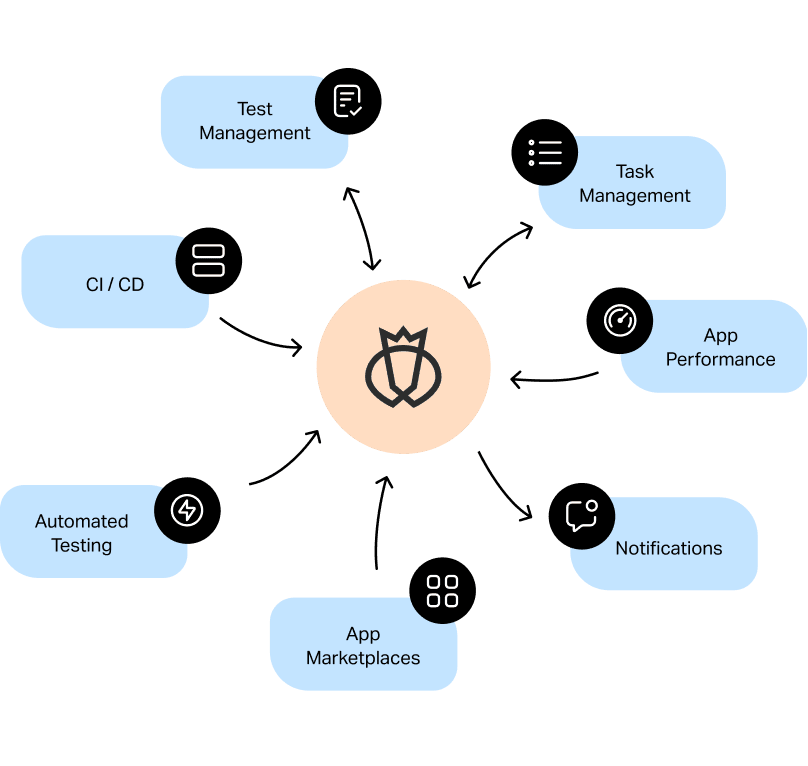The Ultimate Overview to Implementing Automation Testing Successfully
The Ultimate Overview to Implementing Automation Testing Successfully
Blog Article
From Handbook to Automated Screening: A Comprehensive Overview to Transitioning Efficiently and Successfully
In the world of software program screening, the change from guidebook to automated procedures has actually come to be a significantly vital change for companies looking for to boost performance and precision in their screening methods. As innovation remains to breakthrough, the demand for smooth and reliable computerized screening techniques has never been extra important. The journey from manual to automated screening is not without its difficulties, however when approached strategically and with a clear strategy in mind, the advantages can be substantial - automation testing. In this extensive guide, we will discover vital steps and considerations vital for a successful change, from the preliminary selection of devices to the assimilation of automation into existing workflows. Keep tuned to discover the insights that will certainly aid lead the way for a smoother and much more effective screening process.
Advantages of Automated Testing
Automated screening offers countless advantages, boosting performance and accuracy in software advancement processes. Automated tests can be run all at once on numerous devices and operating systems, substantially speeding up the screening stage contrasted to manual screening.
Moreover, automated testing guarantees a higher level of accuracy in discovering flaws. Considering that automated examinations adhere to predefined manuscripts, human mistake is lessened, causing more trustworthy examination outcomes. Uniformity in testing is likewise improved, as automated tests execute the same actions specifically each time they are run. This uniformity is important in making sure that all performances of the software application are thoroughly evaluated, decreasing the likelihood of undetected pests sliding with to manufacturing.
Picking the Right Tools

First of all, examine your goals and demands. Comprehend the scope of your job, the innovations included, and the ability of your group. This evaluation will assist you figure out the attributes and capacities you need in your screening devices.
Secondly, consider the compatibility of the tools with your existing systems and processes. Smooth assimilation with your existing software program growth lifecycle is necessary to make certain a smooth change to automation.
In addition, review the scalability and adaptability of the tools. As your testing requires progress, the tools should have the ability to adapt and accommodate adjustments properly.
Lastly, consider the assistance and neighborhood around the tools. Durable support and an active customer area can supply useful resources and aid when applying automated screening. By thoroughly taking into consideration these facets, you can choose the right devices that line up with your needs and set the phase for a successful shift to automated screening.
Creating Effective Test Manuscripts

When crafting test manuscripts, it is vital to take into consideration the particular requirements of the software being tested and ensure that the scripts deal with all vital functionalities. Clear and detailed calling conventions for examination manuscripts and test instances can enhance readability and maintainability. Furthermore, including error handling devices within the click for source test scripts can aid in identifying and attending to problems promptly.
Moreover, arranging test scripts right into modular parts can improve reusability and scalability, minimizing redundancy and boosting efficiency in examination manuscript upkeep. Regular evaluations and updates to evaluate manuscripts are essential to equal progressing software application requirements and capabilities. By following these principles, testers can produce durable and reliable examination manuscripts that add considerably to the success of automated screening procedures.
Integrating Automation Into Workflows
Efficient combination of automation devices into existing process streamlines processes and enhances efficiency within software application growth cycles. When including automation right into operations, it is important to determine repeated tasks that can be automated to save time and lower human mistake. By perfectly incorporating automated testing devices like Selenium or Appium into the software development lifecycle, teams can achieve faster feedback on code adjustments, bring about quicker pest discovery and resolution. This assimilation enables constant testing throughout the development procedure, making certain that any kind of problems are determined at an early stage, resulting in greater software program high quality. Furthermore, automation can be used to trigger examinations immediately after each code dedicate, providing immediate recognition and liberating testers to focus on even more complicated situations. Proper integration of automation devices needs collaboration in between advancement, testing, and procedures teams to establish a unified process that optimizes performance and performance in providing high-quality software.
Making Sure a Smooth Transition
Effectively transitioning to automated screening involves careful preparation and careful execution to maximize and minimize interruptions performance in the software advancement procedure - automation testing. To guarantee a smooth shift, it is essential to begin by performing an her comment is here extensive evaluation of the existing screening processes and determining areas where automation can bring the most significant advantages. Involving with all stakeholders at an early stage at the same time, consisting of programmers, testers, and project managers, is essential for gathering assistance and buy-in for the automation effort
Interaction is key throughout this transition phase. Clear communication of the goals, benefits, and expectations of automated testing helps to manage any type of resistance or issues that may develop. Furthermore, offering sufficient training and resources for team members to upskill in automation devices and techniques is vital for guaranteeing an effective transition.

Conclusion
To conclude, transitioning Check This Out from handbook to automated screening uses numerous benefits, including boosted effectiveness and integrity. By picking the ideal devices, creating reliable examination scripts, and incorporating automation seamlessly right into operations, companies can ensure a successful and smooth change. It is necessary to embrace automation as an important asset in software testing procedures to enhance total top quality and performance.
In the world of software application testing, the change from guidebook to automated procedures has become a progressively important transition for companies looking for to improve efficiency and precision in their screening methods. Automated examinations can be run at the same time on multiple tools and operating systems, considerably speeding up the testing stage compared to manual screening. Uniformity in testing is additionally enhanced, as automated tests implement the exact same steps specifically each time they are run.To make sure the successful execution of chosen testing devices, the production of efficient examination manuscripts plays an essential function in verifying the functionality and efficiency of automated processes - automation testing. By adhering to these principles, testers can develop robust and effective test scripts that contribute considerably to the success of automated screening processes
Report this page